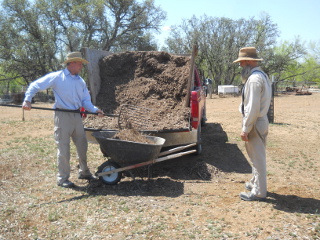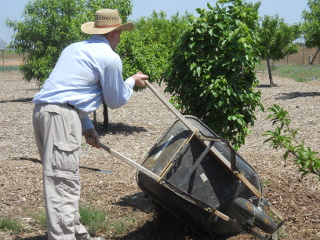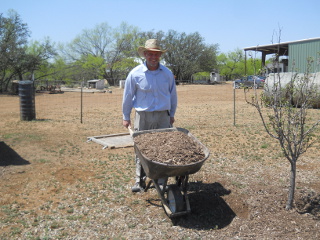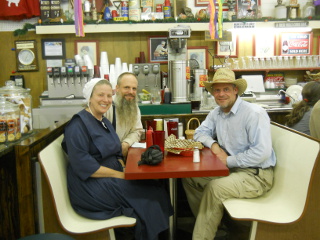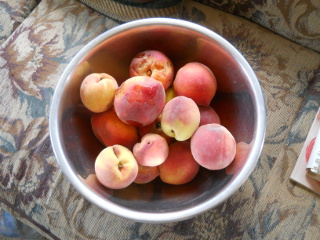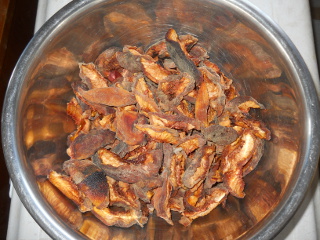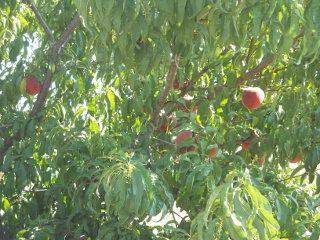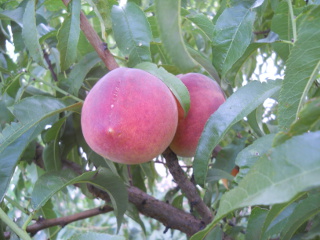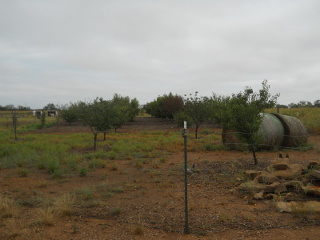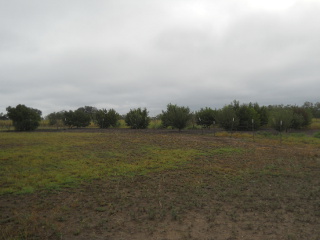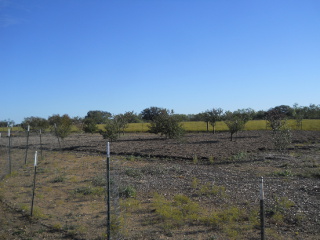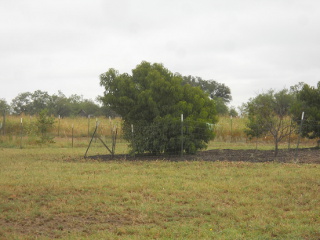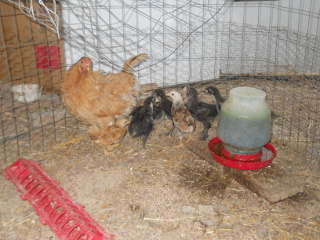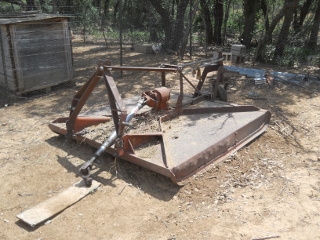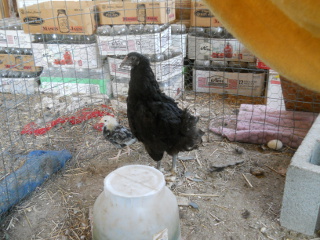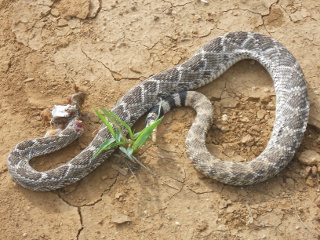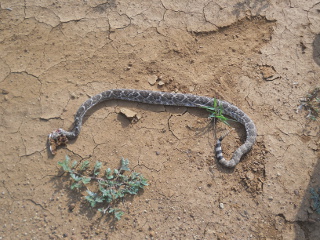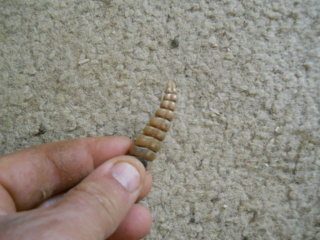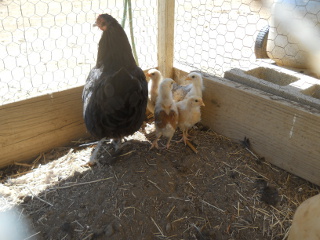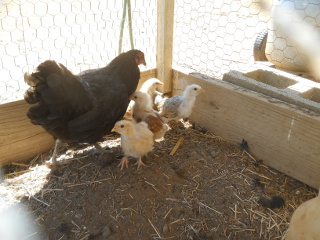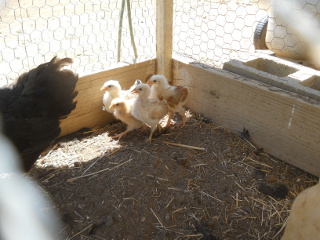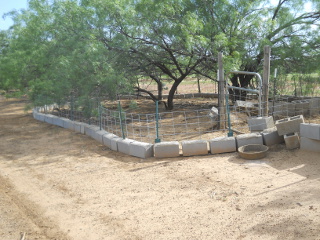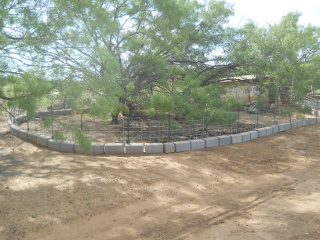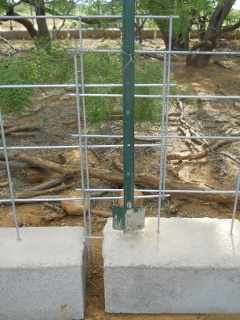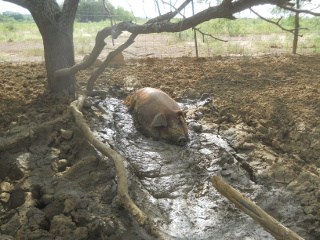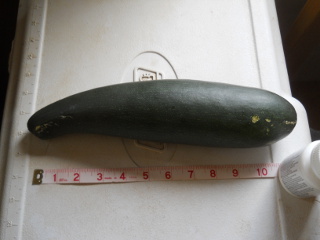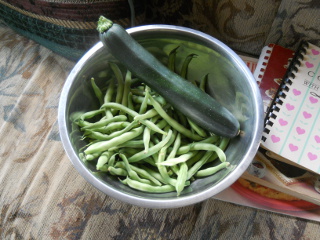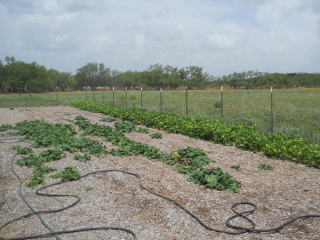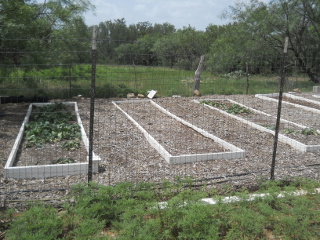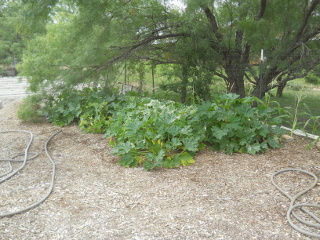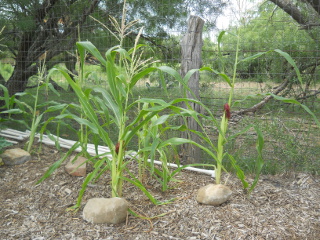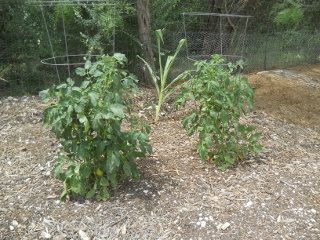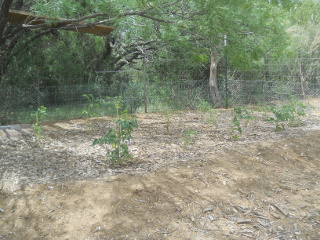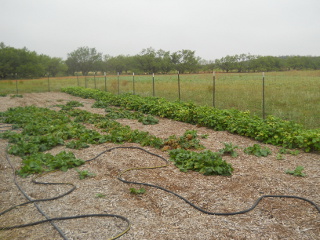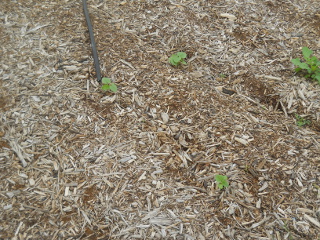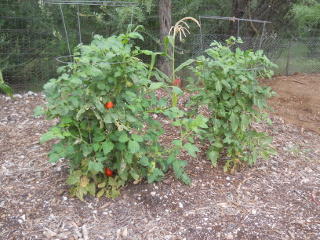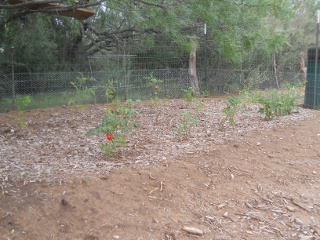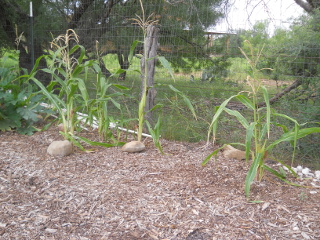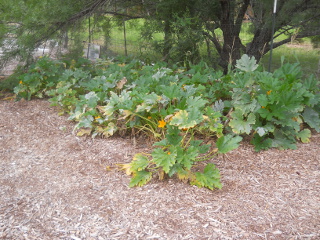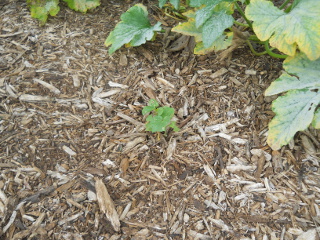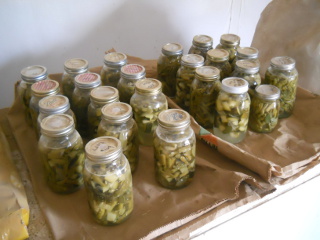We thought we’d give a little orchard update, since it’s been a while since our last one from last year.
We have continued the process of laying down around 8 inches of mulch covering the entire orchard area. When my brother, Kevin, visited in April, another thing he helped with, besides the barn loft and moving goat sheds, was helping lay down some of this mulch.
Here he is unloading it from the mulch carrier. One person would unload while the other person dumped, and then we’d switch jobs:
Here he is dumping some mulch around one of the fruit trees:
And here he is, apparently having way too much fun! 🙂
Once again, it was really nice to have him here to visit! This is burger lunch at the Owl Drug Store Soda Fountain & Grill downtown Coleman:
Back in the orchard, these are our first peaches of the year!
Since they all ripened around the same time, we decided to pull them all and dry them on our solar food dehydrator. We ended up with probably 30-35 dried peaches, thanks to the Lord granting them! The dehydrated fruit seems to be able to last for years in jars, as I recently ate some from a couple of years ago, and they’re not too bad!
And here are our nectarines. We had a couple of trees produce them, and since they’ve been ripening so slowly, we’ve just been eating them along the way. In previous years, we’ve had grasshoppers eat them down; but thanks to the Lord not this year.
If you haven’t experienced it before, I can’t tell you how neat it is to walk to one of your fruit trees, grab a fruit, and eat it right there. What a wonderful provision from God!
Yummy!
Here are a couple of pictures of the orchard now:
You can see the difference I believe the mulch has made, by God’s graces, from that last picture vs. a similar one from last year. It is amazing how much the trees have grown just this year! We’ve seen good growth from ones we got fully covered in the Spring time.
Goats love to eat fruit and nut trees. 🙂 Here is their handiwork on the left side of one of our peach trees. I do hope one day to put up a more permanent fence around the orchard, including chicken wire around the bottom to keep the chickens out so we might plant something perennial-ish in the mulch, like maybe sweet potatoes:
It’s also neat to have trees big enough where God has provided that the birds have a nice little place in which to hang out together. Here’s a little video of them in one of the trees, and them flying away when I got close enough:
We’re so very thankful for the growth of the trees and the provisions the Lord has graciously granted from them!
— David
